|
Here we're going to talk about some of the different controllers that the Playstation One console got, starting from the first digital pad, to the Dual Shock controller and even to special controllers like the rod controller. This list is not complete since there were too many controllers released for the Playstation one (specially in Japan) but if you got information about a specific one and want it to be listed here please CONTRIBUTE the information, thanks. Most of the information and images are taken from wikipedia and http://www.defconsoft.co.uk/.
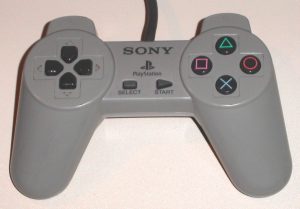

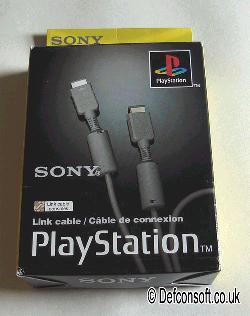
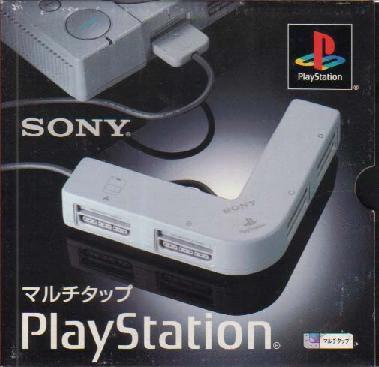

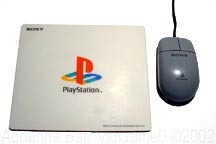
The Analog Joystick uses potentiometer technology previously introduced on consoles such as the Vectrex; instead of relying on binary eight-way switches, the controller can detect minute angular changes through the entire range of motion. The stick also features a thumb-operated digital hat switch on the right joystick, corresponding to the traditional D-pad, and used for instances when simple digital movements were necessary. A compatibility mode for the Analog Joystick was included in the Dual Analog Controller, Sony's first analog revision of its original gamepad design. This controller is used in games like Ace Combat, Bogey Dead 6, Armored Trooper Votoms and a few others. 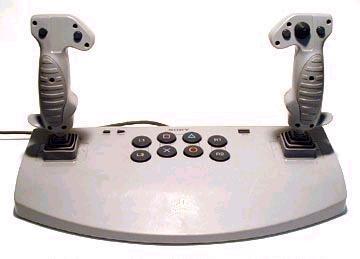
Initially announced in a press release in late 1995, The Dual Analog Controller was first displayed under glass at the PlayStation Expo 96-97 which was held from November 1 to November 4, 1996. It was released in Japan in April 1997, coincident with the Japanese releases of analog-capable titles Tobal 2 and Bushido Blade. It was advertised as allowing for more precise and fluid control of the games' fighters, with the rumble feature contributing to a more realistic experience. Before its release in the United States, Sony revealed that vibration feedback would be removed from the controller. According to a Sony spokeperson, "We evaluated all the features and decided, for manufacturing reasons, that what was most important to gamers was the analog feature." It was released in the United States on August 27, 1997; and in Europe in later 1997 with little promotion. A few months later, the first DualShock controller was released in Japan on November 20, 1997. Namco had already released an analog controller for PlayStation called NeGcon. Sony's Dual Analog Controller's analog mode was not compatible with the NeGcon-compatible games such as WipEout and Ridge Racer. However, Need for Speed II, Gran Turismo, and Gran Turismo 2 feature compatibility with both NegCon and Dual Analog control schemes. Fans of a smaller form factor, Japanese gamers complained that the longer grips made the controller too large to be comfortable and the lack of a rumble feature in the U.S. and European models are the most commonly cited reasons that Sony decided to end production of this controller and redesign it.[citation needed] The Dual Analog Controller was discontinued in all three markets in 1998 to be replaced by the DualShock, although some gamers still regard it as the better gamepad, mostly due to its longer hand grips and ridged shoulder buttons. Further, its rarity has made it highly sought after among collectors. 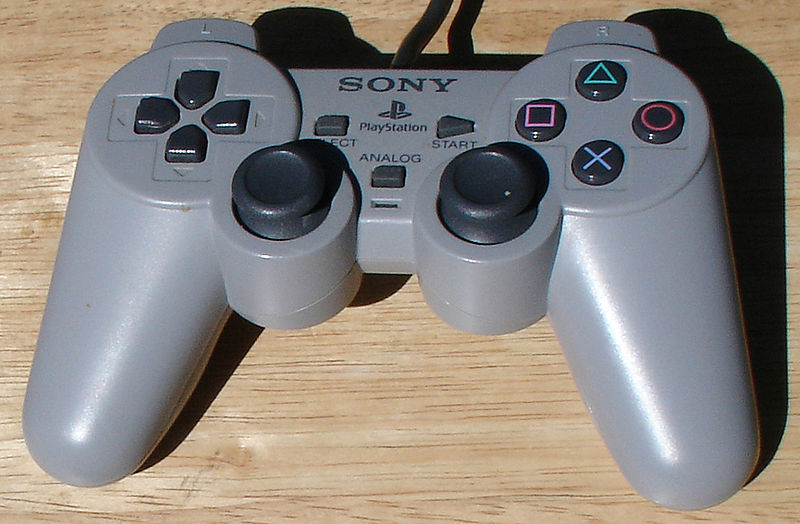 Features: If a game was compatible with the Dual Analog Controller, the player would be able to press the "Analog" button located between the analog sticks to activate the analog mode. This was indicated by a red LED. If a game was not analog-compatible, and was switched to analog mode, it simply wouldn't register any button presses or, in some cases, the PlayStation would consider the controller to be detached. The ability to emulate Sony's own FlightStick by pressing the "Analog" button a second time to reveal a green LED (this was commonly referred to as "FlightStick Mode") provided a less expensive alternative to the FlightStick Analog Joystick and retailed for an average of $35 compared to the Flightstick's retail price of $70.
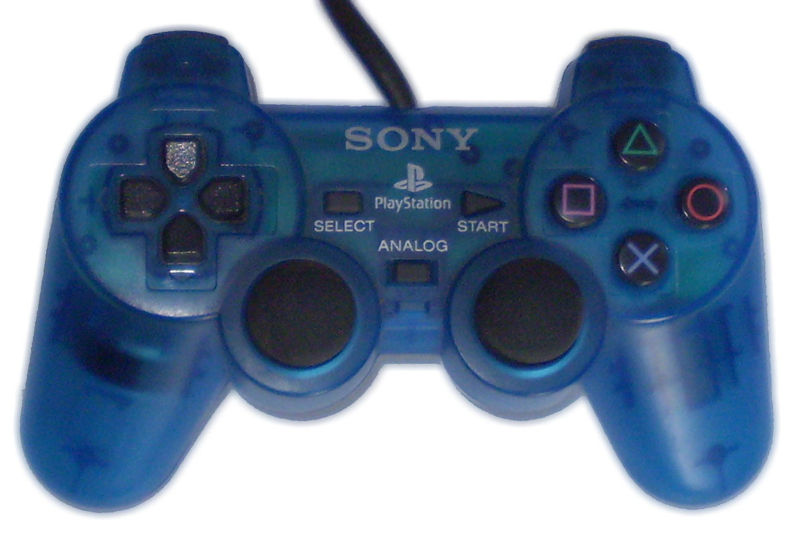 The DualShock Analog Controller (SCPH-1200) is a controller capable of providing feedback based on the onscreen action of the game (if the game supports it), or vibration function. The controller is called Dual Shock because the controller employs two vibration motors: a weak buzzing motor that feels like cell phone or pager vibration and a strong rumble motor similar to that of the Nintendo 64’s Rumble Pak. The DualShock differs from the Rumble Pak in that the Rumble Pak uses batteries to power the vibration function while all corded varieties of the DualShock use power supplied by the PlayStation. Some third party DualShock-compatible controllers use batteries in lieu of the PlayStation’s power supply. The rumble feature of the DualShock is similar to the one featured on the first edition of the Japanese Dual Analog Controller, a feature that was removed shortly after that controller was released. The controller was widely supported; shortly after its launch most new titles, including Crash Bandicoot: Warped, Spyro the Dragon, and Tekken 3 included support for the vibration function and/or analog sticks. Some games designed for the original vibration ability of the Dual Analog such as Porsche Challenge also work. Many games took advantage of the presence of two motors to provide vibration effects in stereo including Gran Turismo and the PlayStation port of Quake II. Released in 1999, the PlayStation hit Ape Escape became the first game to require the use of such an item. Like its predecessor the Dual Analog Controller, the DualShock has two analog sticks. Unlike said controller the sticks feature rubber tips in lieu of the grooves recessed into the Dual Analog Controller's sticks. SCPH-110 Dual Shock: was the first & original Dual Shock Model
Software for the PocketStation was typically distributed as an extras for PlayStation games, included in the CD-ROM, enhancing the games with added features. Stand-alone software could also be downloaded through the PlayStation console. The software is then transferred to the PocketStation for use. A built-in infrared data interface allows direct transfer of data such as game saves between PocketStation units, as well as multiplayer gaming. Although the system was not widely released outside of Japan, there were apparently plans to do so. A feature on the system appeared in Official UK PlayStation Magazine, for example, and a few games (such as Final Fantasy VIII) retained PocketStation functionality in their localized versions. As a result, the PC version of Final Fantasy VIII added a stand-alone Chocobo World game as part of the installation. 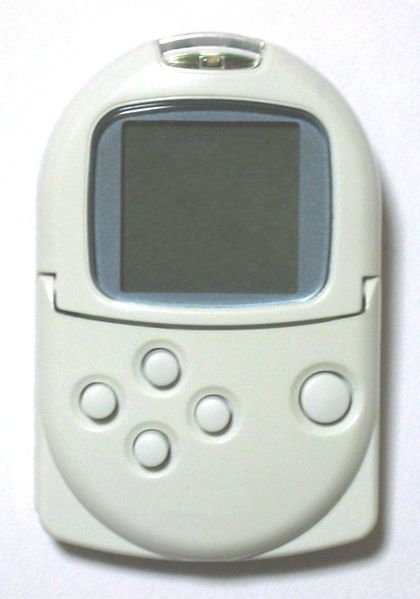 There were 2 versions: SCPH-4000 : White SCPH-4000C : Crystal Technical specifications: CPU: ARM7T (32-bit RISC Processor)
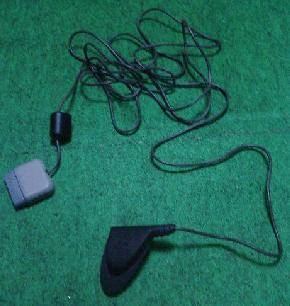
Hands-Free Auto TUrbo for rapid firing without pressing a button
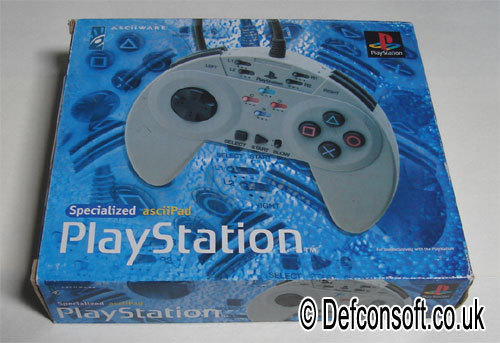
Auto Turbo can throw up to 36 punches per second, hands free.
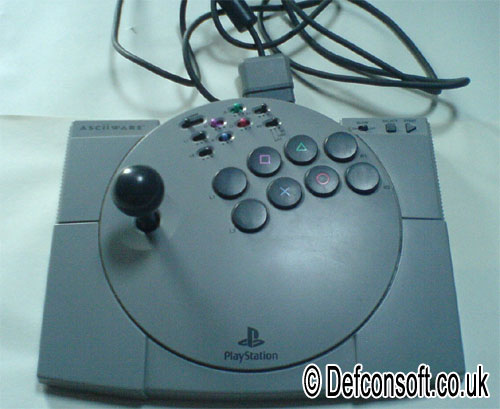
The neGcon was an unusual design in that the left and right halves of the controller were connected by a swivel joint and thus the halves could be twisted relative to each other. The full extent of this twist was available to the console as an analogue measurement. Also unusual for its time were the buttons. The regular PlayStation controller of the time featured all-digital controls with a D-Pad on the left; R1, R2, L1, and L2 shoulder buttons; triangle, circle, square, and X buttons on the right; plus select and start buttons in the center area of the controller. The neGcon removed the L2 and R2 buttons as well as the select button. The neGcon replaced the digital circle and triangle buttons with digital A and B buttons, and also replaced the R1 shoulder button with a digital R shoulder button. The neGcon featured the digital D-Pad as one area similar to competing console's controllers and unlike the plus-shaped configuration of the official PlayStation controller. The remaining buttons received more elaborate treatment. The X and square buttons were replaced with analogue ? and ? buttons. These buttons were in a recessed well and had approximately 7mm of travel. The user's thumb could be rested on the edge of the well, with the tip reaching over the edge to press the ? and ? buttons. This allowed the tip of the thumb to be accurately pivoted to depress the ? and ? buttons varying distances. This allowed very precise control with little learning. The L shoulder button was also analogue, with about 5mm of travel. The R shoulder button had a 5mm throw like the L shoulder button but activated only a digital sensor. 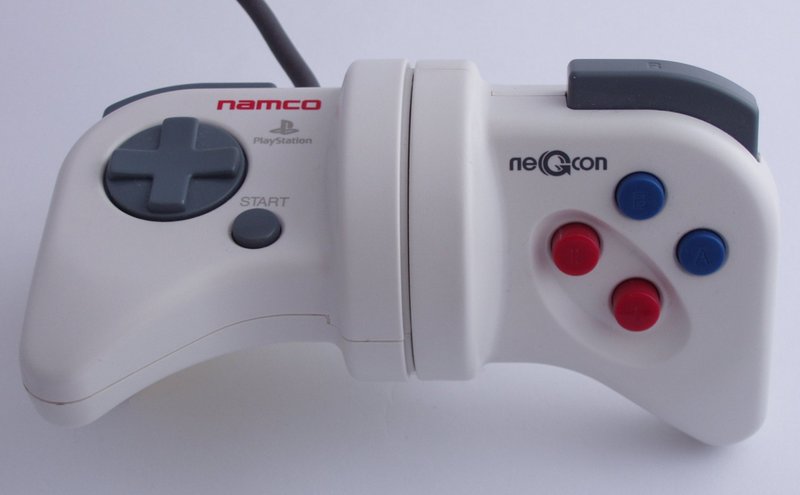
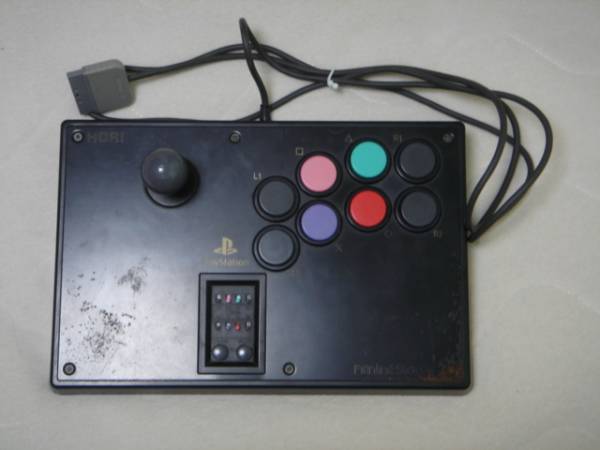
Program Function - Simply push one button to use a recorded special attack. Many preset commands also included. Rapid-Fire function - Repeatedly execute a command at high speed: 5, 20, or 30 times a second. Slow Function - Automatically cycles between pause and start to slow down game play (in games that can be paused with the Start Button.) 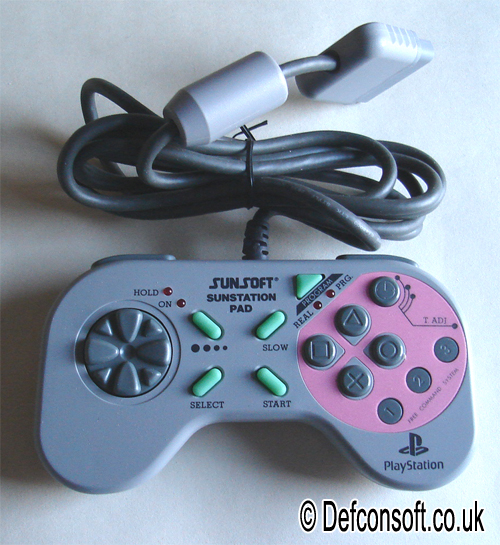
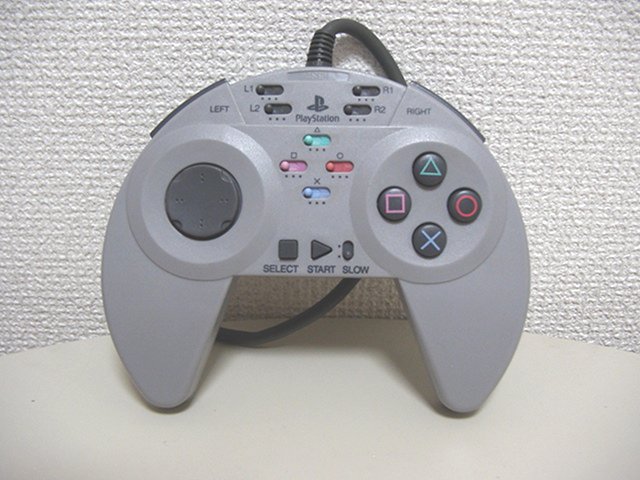
Namco released it in 1998 along with Ridge Racer 4, and was sold both separately and as a bundle with the game. Since its release only one other real force-feedback peripheral has been released for consoles: Logitech's series of racing wheels for Xbox and Playstation. 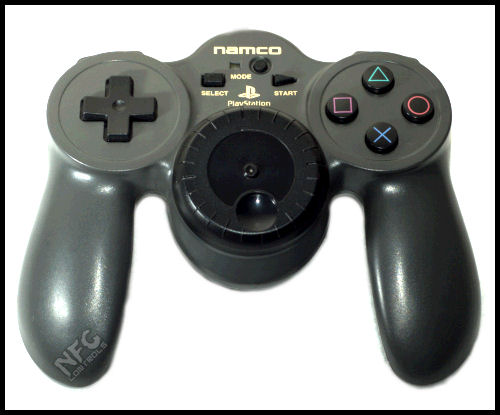 Compatibility: It's not wheel-compatible, so unlike the NeGCon it can't be used for most Playstation racing games. It does work with Ridge Racer 4 and the PS2's Ridge Racer V, but beyond that you'd best assume it doesn't work. Technical: The wheel is free-spinning, and is connected to the motor by a series of gears. The slack in these plastic gears contributes to the overall cheap feel, as the disc rotates a bit before engaging.
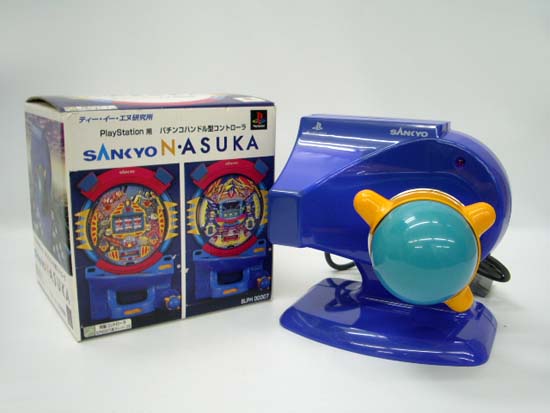
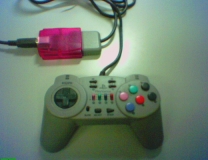
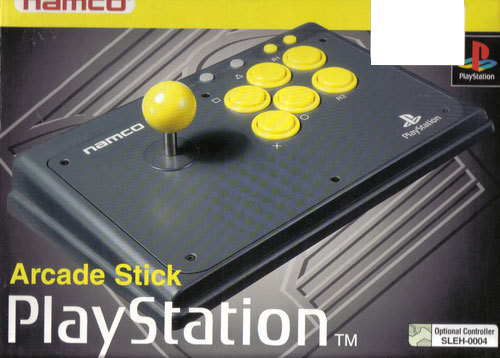 The Arcade Stick copies the layout and quality of components typically found in arcade game machines. It is compatible with the original PlayStation control pad protocol therefore it can be used with many Playstation 1 and 2 games. Namco PlayStation games like the Tekken series or Soul Edge/Blade were also labelled as compatible with the peripheral.
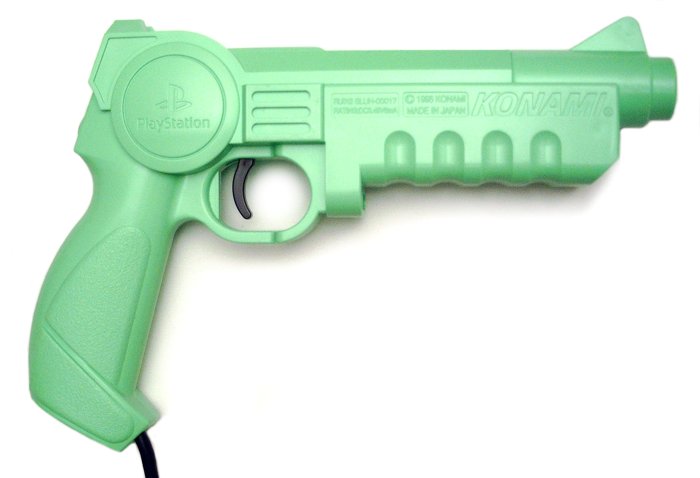
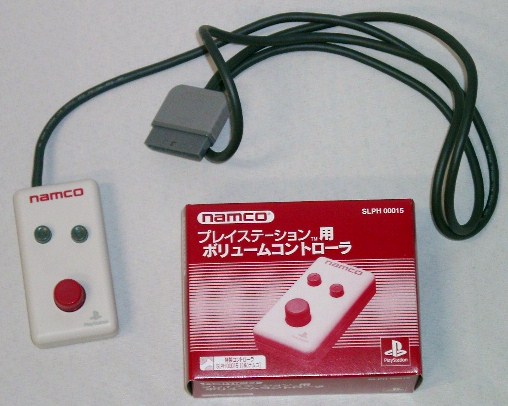
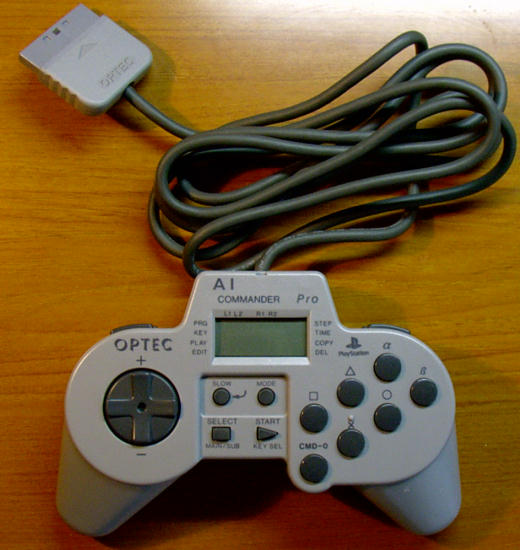
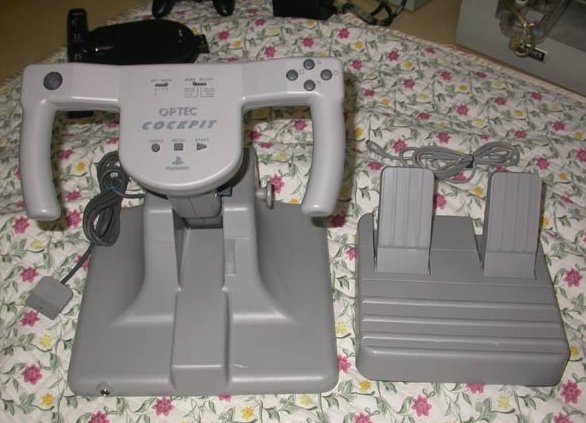
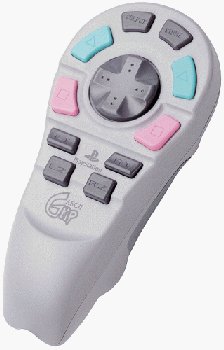
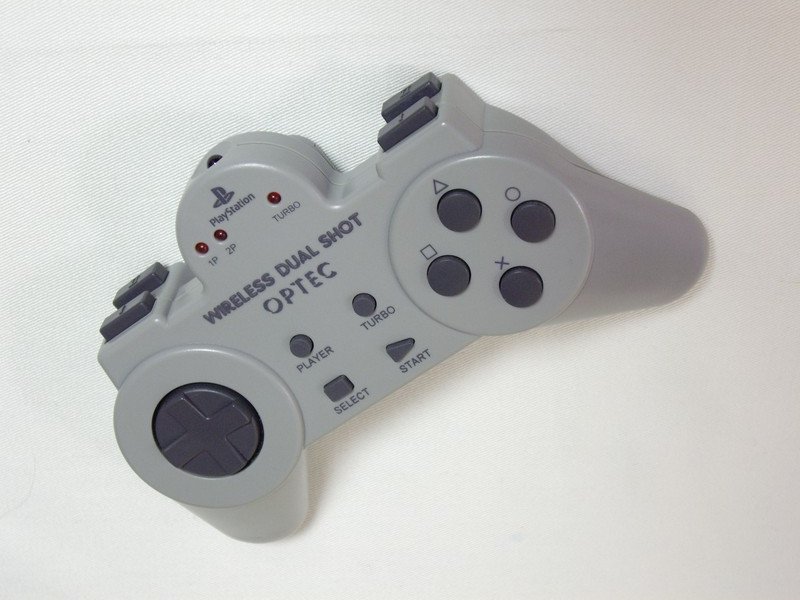
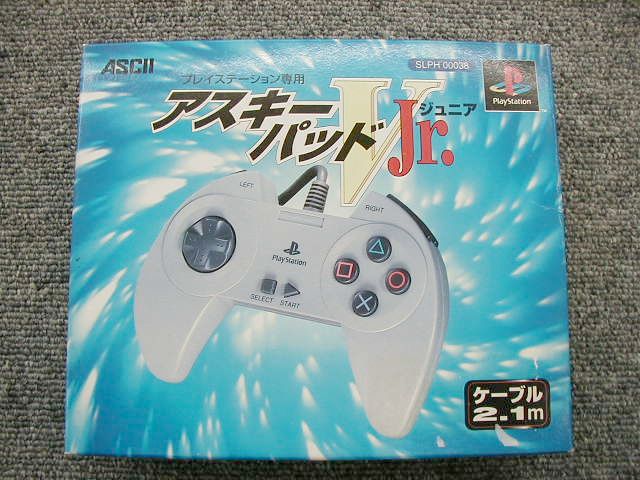
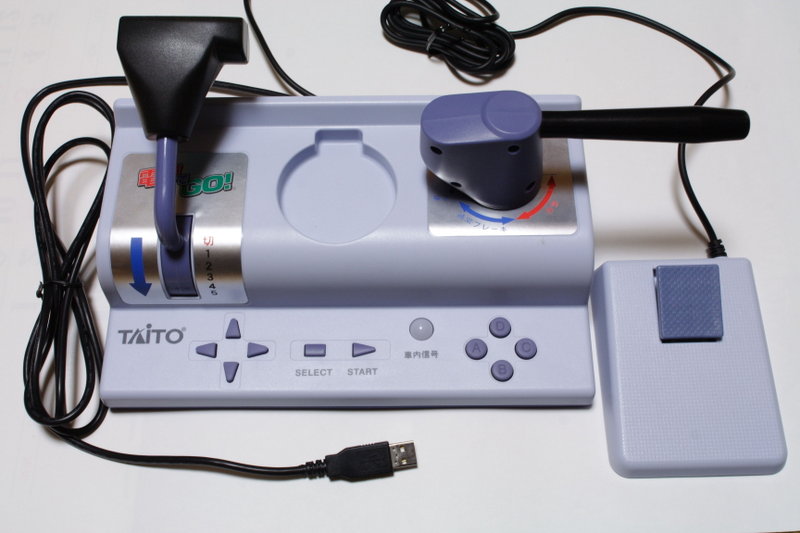
Developed specifically for use on Resident Evil, Resident Evil - Director’s Cut and Resident Evil 2 (games not included).
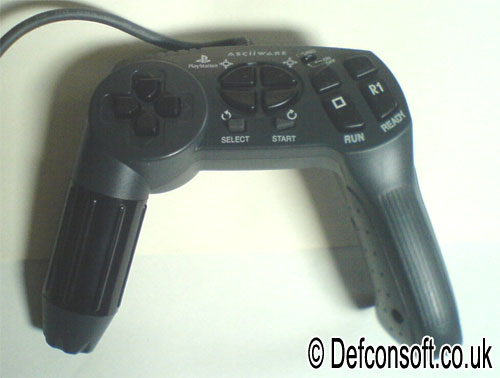
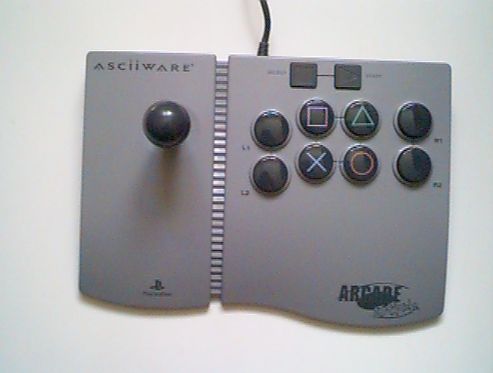
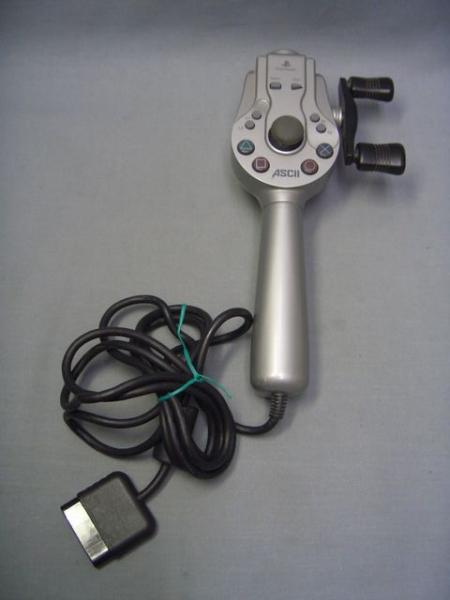
Still it does work fantastically for racing games, using my guage game of Ridge Racer this game in with the 2nd quickest lap time behind the NegCon. 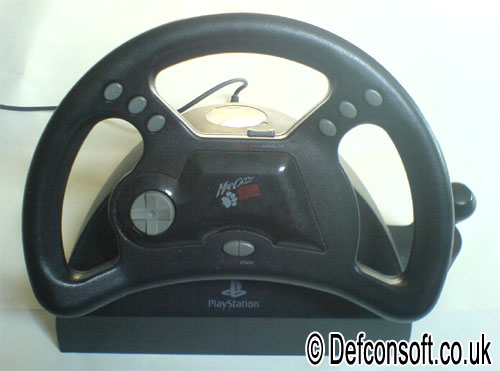 Analog and Digital Steering Wheel with Foot Pedals
The first Guncon (G-Con 45 in Europe) (Sony ID: SLEH-00007) was bundled with the PlayStation conversion of Time Crisis. 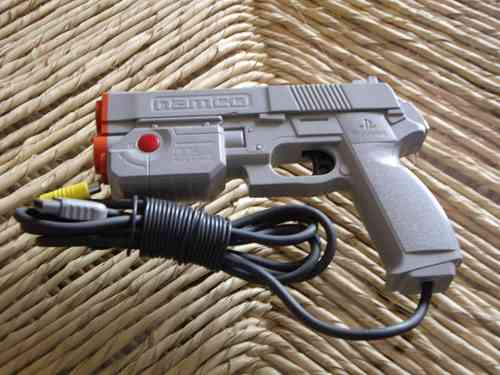
Using The Glove is as simple as pointing. Begin play in a natural, comfortable ‘handshake’ position. What could be more user friendly?
No configuration is required - simply plug The Glove right into the controller port on your PlayStation game console. Works with all your existing games: Digital mode works with games designed for a standard PlayStation control pad

 ASC-05158B BEATMANIA JUNK: used in games like Beatmania or Guitar Freaks. 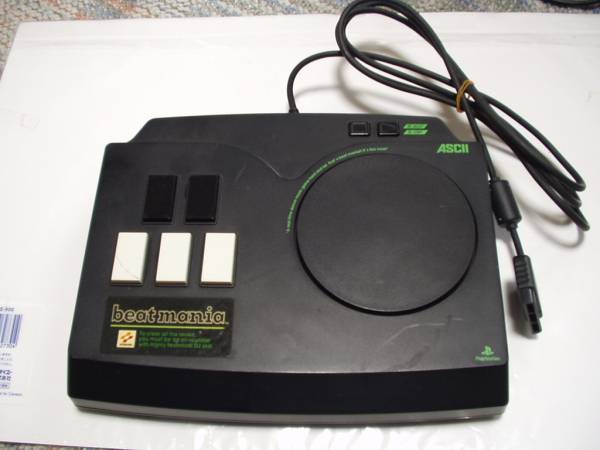
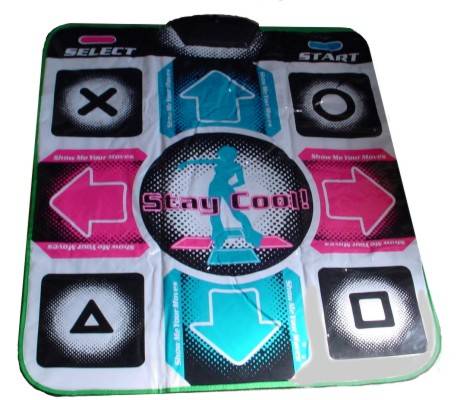 For use exclusively with PlayStation 2, PlayStation (PS one) and PlayStation
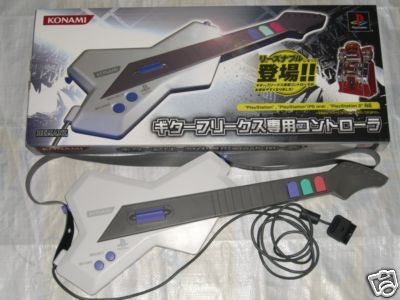 |